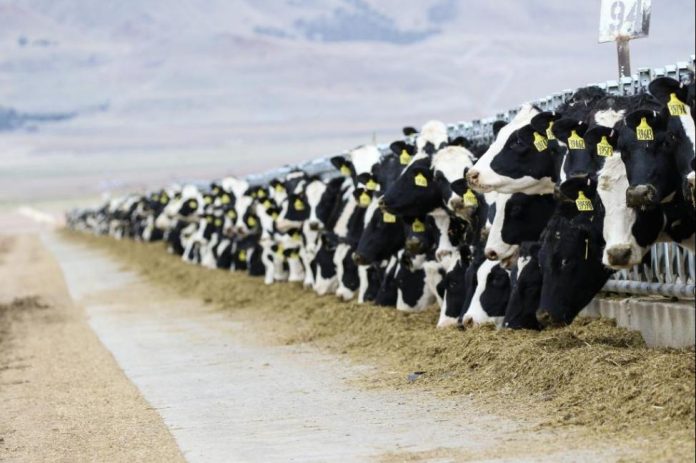
EVANSVILLE, Ind., Jan. 8 (UPI) — More than 800 dairies went out of business in Wisconsin last year, making 2019 among the worst years ever recorded for dairy closures in the state.
“This is a big deal,” said Mark Stephenson, the director of dairy policy analysis at the University of Wisconsin-Madison’s College of Agricultural Life Sciences. “We lost 10 percent of the dairy farms. We’ve had some years approach that number, but this is the biggest one on record that I can find.”
It’s a trend happening across the country, Stephenson added. Waning consumer demand, loss of trade and an oversupply of milk have driven milk prices too low for farms to profit.
America’s largest milk producer, Dean Foods, filed for bankruptcy protection in November, citing “a challenging operating environment” and declining “consumer milk consumption.” And on Sunday, a second major American dairy company, Bordon Dairy, also filed for bankruptcy protection.
The U.S. Department of Agriculture has not yet released data on the number of dairies that closed throughout the country last year, but experts expect that — like the Wisconsin numbers — they will be high.
For the last five years, milk prices have been too low for the majority of farmers to make a profit — and many could not earn enough to cover their bills.
“There have been multiple farms close around here,” said Dan Brick, the owner of Brickstead Dairy, a 1,000-cow farm in Greenleaf, Wis. “There was one that just had an auction last week. It was a 500-cow dairy, and they just closed and auctioned off their cows. People are struggling.”
But that trend could be changing.
In the final months of 2019, milk prices rose to 20 cents per pound — the highest they had been since 2014. As of Tuesday, the price was roughly 17 cents per pound, according to the Chicago Mercantile Exchange — still higher than the average price during the last five years, which was mostly below 16 per pound.
“It makes it a little easier to get out of bed in the morning when you’re making money,” said Charles Young, the owner of a 65-cow dairy in Mosinee, Wis.
The price is rising now because milk production — finally — is decreasing, said Bob Cropp, an emeritus professor of the University of Wisconsin-Madison’s Department of Agriculture and Applied Economics.
For the last five years, the dairy industry was producing more milk than the market needed. Milk prices in 2014 hit a record high, Cropp said. Dairy farms across the country responded by adding more cows and increasing production.
America’s various trade disputes with Mexico, Canada and China — some of the United States’ top milk buyers — have strained the dairy industry further, Cropp said.
Despite the low prices, production remained high through the first half of 2019. But by fall, the mounting farm closures began slowing production.
Between July 2018 and July 2019, the U.S. dairy herd lost 100,000 cows — shrinking from 9.4 million animals to 9.3 million. The USDA will release the updated figures on the U.S. cow herd size later this month.
“It took a little while to slow production,” Cropp said. “But, we’re working our way out of the supply and demand situation.”
Experts predict prices will stay elevated during 2020. Many dairies continue to fold, unable to recover from five years of losses, Stephenson said. And those that remain will likely lack the capital to increase production.
“We’re very optimistic about it,” Brick said. “Prices have rebounded. We’re not making a pile of money, but we’re in the black again. We’re due for a good year.”





